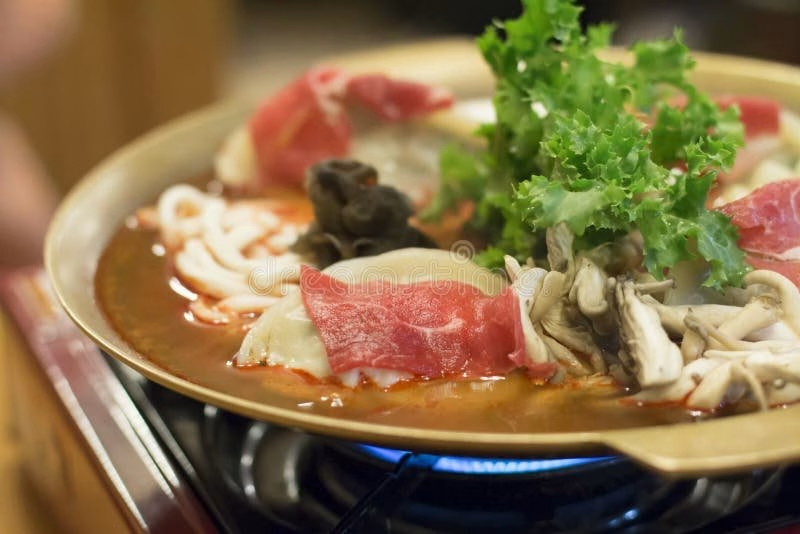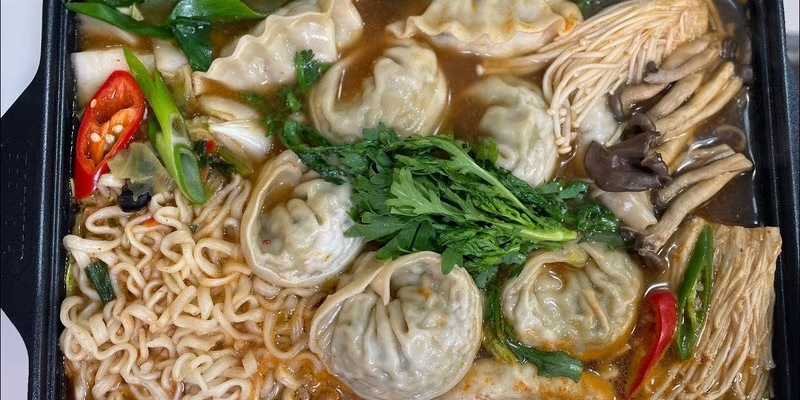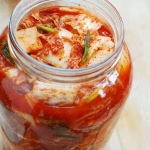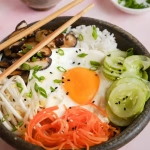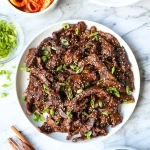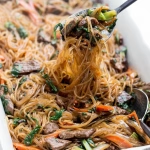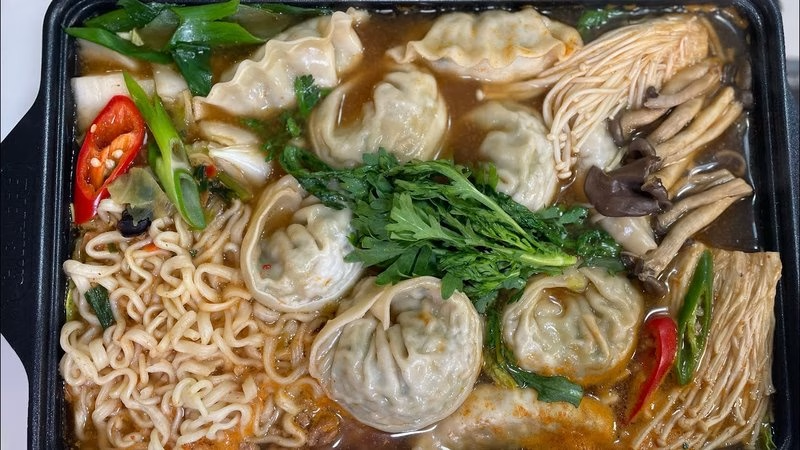
Mandu Jjigae, or Dumpling Stew, is a cozy dish that warms the heart and soothes the soul. This traditional Korean stew is cherished for its rich flavors and comforting nature, making it a popular choice during the chilly months. Originating from the vibrant streets of South Korea, Mandu Jjigae combines the delightful taste of dumplings with a savory broth, creating a meal that’s both satisfying and delightful to the palate. In this article, you’ll discover how to make Mandu Jjigae (Dumpling Stew) in the comfort of your own kitchen, explore different Mandu Jjigae (Dumpling Stew) ingredients, and learn about various variations of this beloved recipe. Whether you’re a seasoned cook or a novice, this guide will help you create the perfect Mandu Jjigae.
Ingredients
| Ingredient | Measurement | Description |
|---|---|---|
| Gyoza dumplings | 12-16 pieces | Frozen or homemade dumplings filled with ground meat and vegetables are essential for Mandu Jjigae (Dumpling Stew). |
| Vegetable broth | 4 cups | This forms the base of the stew, providing depth and richness to the Mandu Jjigae (Dumpling Stew). |
| Kimchi | 1 cup, chopped | Kimchi adds a spicy, tangy flavor that elevates the stew, making it a true comfort food. |
| Tofu | 1 cup, cubed | Soft or firm tofu enriches the stew, adding protein and a silky texture. |
| Green onions | 2, chopped | Green onions bring freshness and a mild onion flavor to the Mandu Jjigae (Dumpling Stew). |
| Garlic | 3 cloves, minced | Fresh garlic enhances the aroma and depth of flavor in Mandu Jjigae (Dumpling Stew). |
| Sesame oil | 1 tablespoon | This oil provides a nutty richness that complements the other ingredients beautifully. |
| Salt and pepper | To taste | Essential for seasoning and balancing flavors in the Mandu Jjigae (Dumpling Stew). |
Step-by-Step Instructions
- Prepare the Ingredients: Start by gathering all your ingredients. If you’re using frozen dumplings, let them thaw slightly. Chop your vegetables, and if you’re using homemade dumplings, make sure they’re filled and ready to go. Trust me, having everything prepped makes the cooking process so much smoother!
- Cook the Base: In a large pot, heat 1 tablespoon of sesame oil over medium heat. Add the minced garlic and chopped green onions, sautéing until fragrant. This step is crucial as it forms the aromatic foundation of your Mandu Jjigae (Dumpling Stew).
- Add Kimchi & Broth: Stir in the chopped kimchi, letting it cook for a couple of minutes before adding the vegetable broth. Bring the mixture to a boil. The kimchi will infuse the broth with its signature flavor, giving your stew a deliciously spicy kick!
- Add Tofu & Dumplings: Gently add the cubed tofu and your prepared dumplings to the boiling broth. Reduce the heat and let it simmer for about 10-15 minutes. This allows the flavors to meld beautifully while ensuring your dumplings cook through.
- Season & Serve: Taste your Mandu Jjigae (Dumpling Stew) and adjust the seasoning with salt and pepper. Once ready, ladle the stew into bowls, garnishing with additional green onions if you like. Serve hot and enjoy the comforting flavors!
Pro Tips
- For an extra depth of flavor, consider using homemade dumplings filled with your choice of meat and vegetables.
- If you prefer a thicker broth, mix a teaspoon of cornstarch with a little water and stir it into the stew during the last few minutes of cooking.
- Feel free to add in other vegetables like carrots, mushrooms, or spinach for added nutrition and flavor.
- Leftover Mandu Jjigae (Dumpling Stew) can be refrigerated and reheated, but the dumplings may become softer.
- Experiment with different types of kimchi; some are spicier than others, so choose according to your taste preference!
Nutritional Information
| Nutrition Facts | Per Serving |
|---|---|
| Calories | 320 |
| Protein | 18g |
| Carbohydrates | 40g |
| Saturated Fat | 3g |
| Fiber | 5g |
| Cholesterol | 20mg |
| Sugars | 2g |
| Fat | 10g |
FAQs
What is the best way to store Mandu Jjigae (Dumpling Stew)?
You can store Mandu Jjigae in an airtight container in the refrigerator for up to three days. Reheat on the stove or in the microwave, adding a little water to loosen the broth if necessary.
Can Mandu Jjigae (Dumpling Stew) be made vegan or gluten-free?
Absolutely! For a vegan version, use vegetable dumplings and ensure that your broth is plant-based. For gluten-free, opt for gluten-free dumplings and broth.
What are the best side dishes to serve with Mandu Jjigae (Dumpling Stew)?
Pair your stew with a side of steamed rice, pickled vegetables, or a fresh salad for a complete meal.
How long does it take to prepare Mandu Jjigae (Dumpling Stew)?
Preparation and cooking time is about 30-40 minutes. It’s quick, especially if you use pre-made dumplings!
Can I freeze Mandu Jjigae (Dumpling Stew) for later?
Yes! Freeze it in an airtight container. When ready to eat, thaw overnight in the refrigerator and reheat on the stove.
What type of dumplings should I use for Mandu Jjigae (Dumpling Stew)?
Gyoza or mandu dumplings work best. You can use store-bought or make your own, filled with meat or vegetables.
What flavors make Mandu Jjigae (Dumpling Stew) unique?
The combination of kimchi, garlic, and sesame oil offers a unique balance of spicy, savory, and nutty flavors that are characteristic of Korean cuisine.
Can I add more vegetables to Mandu Jjigae (Dumpling Stew)?
Yes! Feel free to add vegetables like carrots, spinach, or zucchini for extra nutrition and color.
Now you have all the tools to make a delightful Mandu Jjigae (Dumpling Stew) right at home! This dish is not only quick to prepare but also offers a comforting taste of Korean culture. Don’t hesitate to experiment with ingredients or variations to make it your own. Tried this Mandu Jjigae (Dumpling Stew) recipe? Let us know your experience in the comments!
